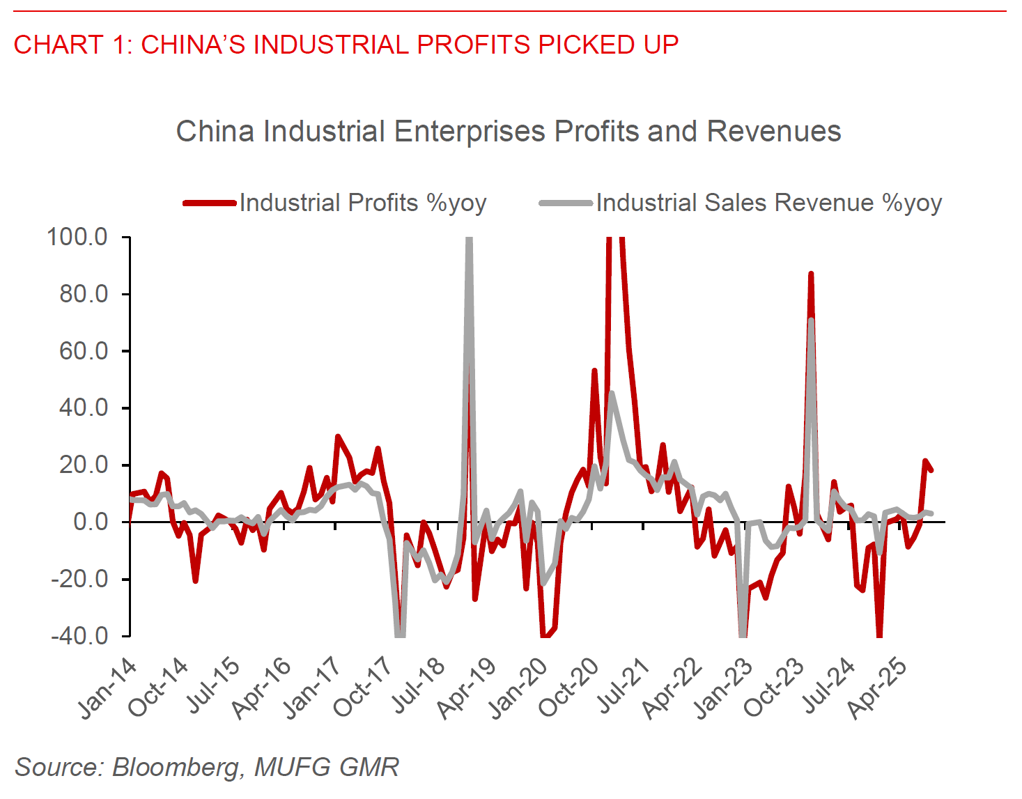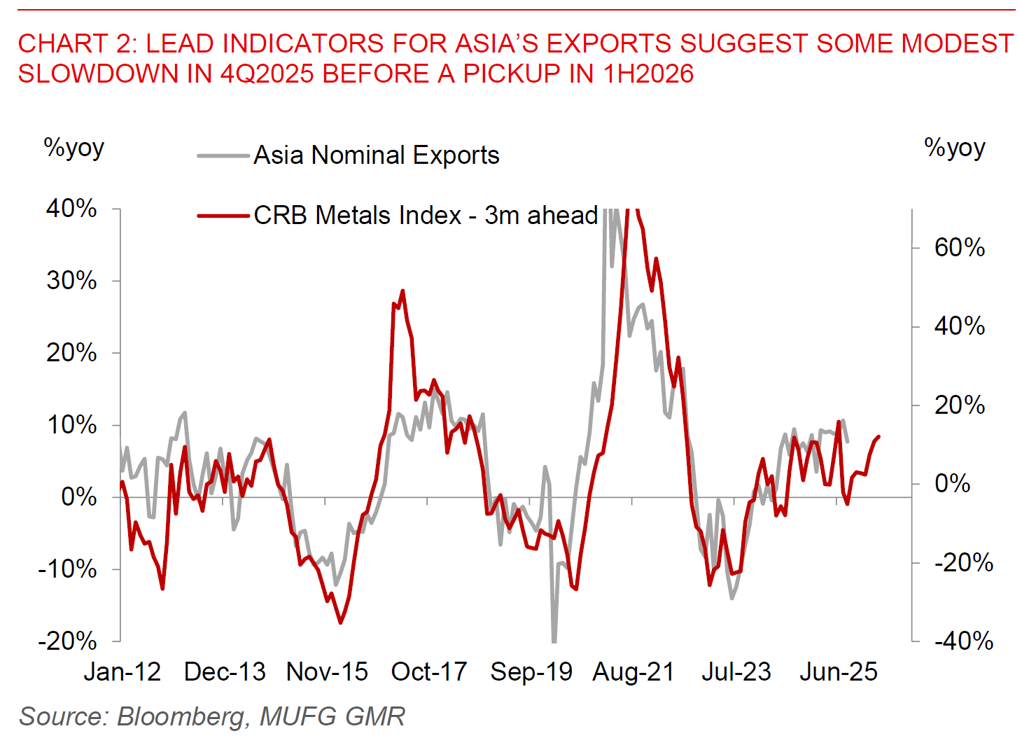Ahead Today
G3: Eurozone Bank Lending Survey
Asia: India industrial production
Market Highlights
Risk assets improved with equities higher, the Dollar was softer and Asian currencies helped to some extent, and safe-haven demand fell with gold below US$4000 levels. One key driver was the positive signals on US-China trade talks that we have seen over the weekend, and an expectation that a meeting between Trump and Xi looks more likely, and coupled with a flurry of trade deals that the President Trump signed with several ASEAN countries. Meanwhile, markets will focus on the meeting between US President Trump and also newly elected Japan Prime Minister Takaichi, the overall tone of it, coupled with any details around the current investment pledge by Japan.

Across Asia, FX was supported by a combination of a stronger CNY fix coupled with better macro data. In particular, China’s industrial profits rose by 22%yoy for September, and 3.2% year-to-date, in a potential sign that the authorities’ anti-involution policy push might be bearing some initial fruits with profits outstripping revenue growth. Some of this is perhaps due to a low base effect, while details suggest that the sector dispersion in profit growth is wide with IT, autos, steel doing better than the likes of coal, liquor and export sectors. Overall, the key for Asia FX markets is whether the current optimism over Chinese assets can continue and thereby providing a supportive environment for CNY. We see USD/CNY moving lower gradually towards 7.05 by 1Q2026 and 7.00 by 2Q2026.
Beyond China’s macro data, the data out of Asia has thus far been quite robust despite tariffs announced by the US. Thailand’s exports rose by 19%yoy for September as an example, while we had South Korea’s 3Q GDP numbers which surprised markets on the upside at 1.2%qoq sa, helped by stronger sequential improvements in private consumption and to a smaller extent government spending. The latter also fits in with the recent Bank of Korea’s less dovish stance in holding rates, in part due to concerns over a overheating housing market and higher FX volatility in the South Korean won. For Asia’s exports more generally, there are some tentative signs that tariffs by the US have slowed activity in the likes of India (which has 50% reciprocal tariffs) and Taiwan, but overall the absolute levels in exports have held up quite well. This could well change moving forward given the payback from front-loading coupled with upcoming sectoral tariffs including on pharma and semiconductors, but for what it’s worth our best lead indicators on Asia’s exports including from metal prices suggest some modest slowdown into year-end before a pickup later in 1H2026.

